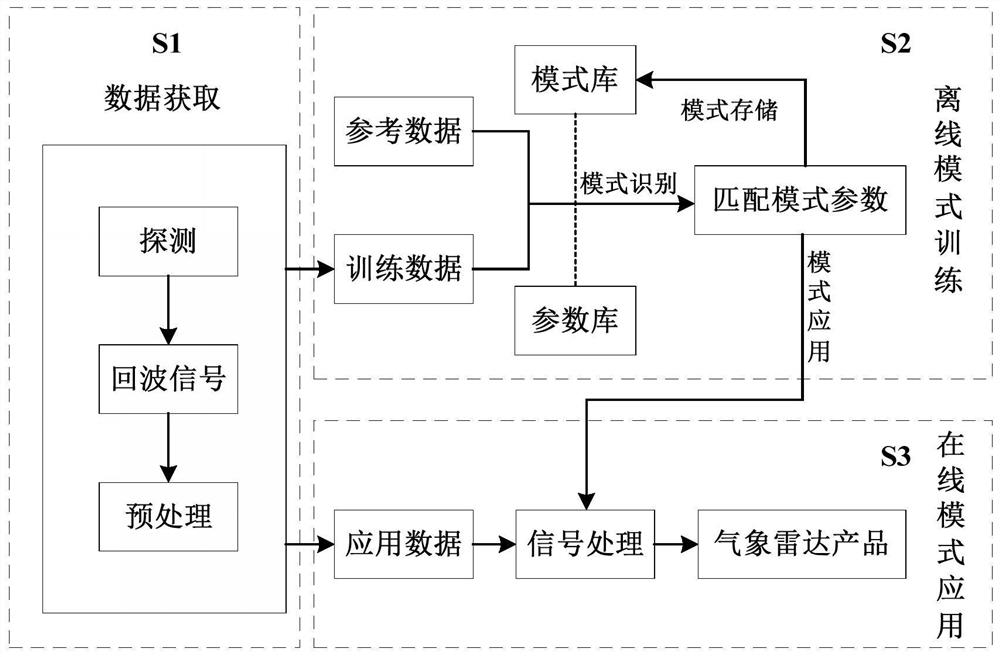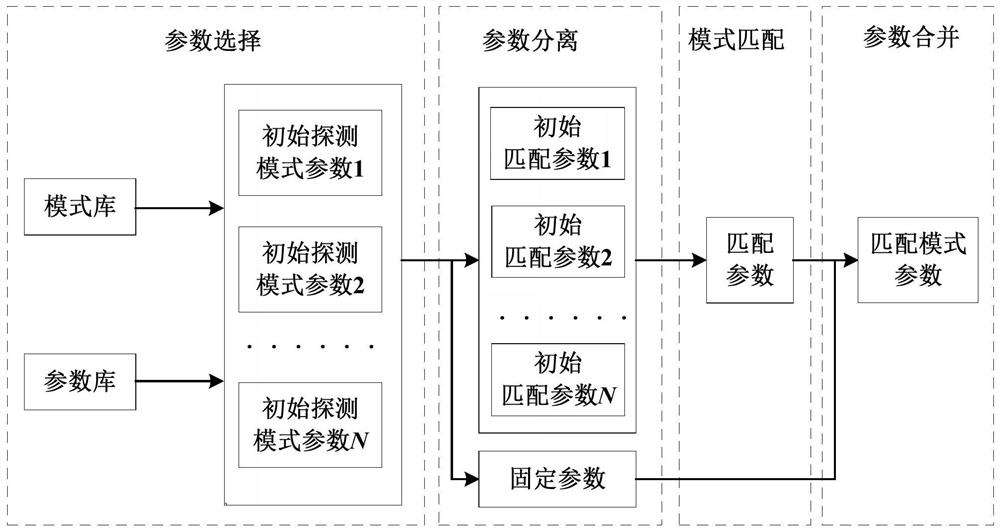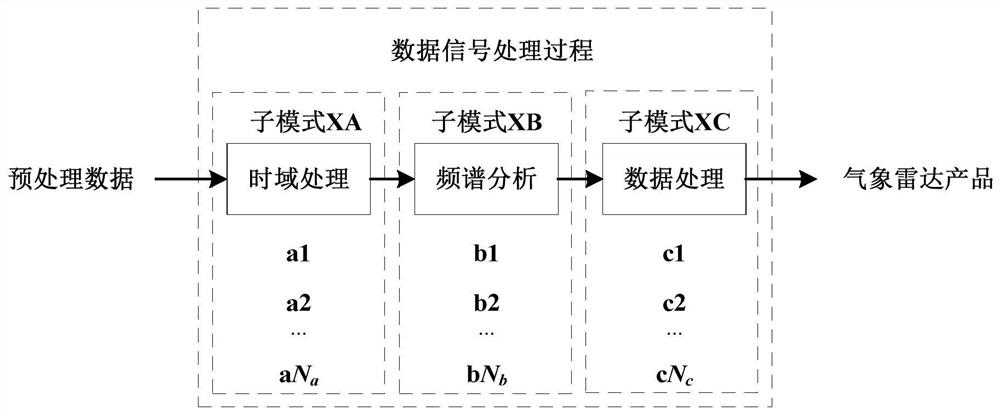Meteorological radar detection mode identification method and system based on improved genetic algorithm
A technology for improving genetic algorithms and weather radars. It is applied in character and pattern recognition, genetic laws, radio wave measurement systems, etc. It can solve the problems of difficulty in guaranteeing validity and low efficiency of adjustment methods, and achieves faster convergence speed and less computation. , the effect of improving efficiency
- Summary
- Abstract
- Description
- Claims
- Application Information
AI Technical Summary
Problems solved by technology
Method used
Image
Examples
Embodiment 1
[0073] This embodiment is a weather radar detection pattern recognition method based on an improved genetic algorithm, which is suitable for scenarios that require weather radar calibration, data comparison, pattern matching, numerical forecast element acquisition, mobile weather detection, etc., such as figure 1 shown, including the following steps:
[0074] Step S1, the data acquisition stage, the meteorological echo signal is obtained by transmitting and receiving electromagnetic waves through the weather radar, and it is preprocessed to generate training data and application data;
[0075] Step S2, the offline mode training process, using the improved genetic algorithm, using the historical mode parameters stored in the mode library as the initial sample, searching for the best mode parameters in the parameter library, so that the training data is carried out under the optimal mode parameters The error between the result obtained by the data signal processing and the refer...
Embodiment 2
[0083] The embodiment of the present invention specifically introduces the data acquisition stage in step S1 of embodiment 1, including the following steps:
[0084] Step S11, the detection process, the weather radar emits modulated electromagnetic waves of a specific frequency into the air, and receives the atmospheric echo analog signal reflected by the tracer;
[0085] Step S12, the meteorological radar samples, filters, and quantizes the atmospheric echo analog signal to obtain a digital echo signal containing meteorological information;
[0086] In step S13, the meteorological radar further filters the digital echo signal, decodes the coded signal, and obtains training data for offline mode training and application data for online mode application.
[0087] The above steps provide data for time-frequency domain analysis and signal data processing for offline mode training and online mode application.
Embodiment 3
[0089] The embodiment of the present invention specifically introduces the offline mode training process of step S2 in Embodiment 1, and the specific implementation process is as follows:
[0090] Step S21, obtaining training data and reference data as a control group;
[0091] In step S22, a total of N groups of initial detection mode parameters are randomly selected in the mode library and the parameter library; wherein, the model library stores the optimal detection mode parameters of each previous weather radar at each deployed physical location; the parameter library All possible combinations of the current weather radar detection mode parameters are stored;
[0092] Step S23, using the initial detection mode parameters as the initial population, taking the comprehensive error between the weather radar products obtained after the training data is processed by the detection mode parameters and the weather radar products contained in the reference data as the fitness evalua...
PUM
 Login to View More
Login to View More Abstract
Description
Claims
Application Information
 Login to View More
Login to View More - R&D
- Intellectual Property
- Life Sciences
- Materials
- Tech Scout
- Unparalleled Data Quality
- Higher Quality Content
- 60% Fewer Hallucinations
Browse by: Latest US Patents, China's latest patents, Technical Efficacy Thesaurus, Application Domain, Technology Topic, Popular Technical Reports.
© 2025 PatSnap. All rights reserved.Legal|Privacy policy|Modern Slavery Act Transparency Statement|Sitemap|About US| Contact US: help@patsnap.com



